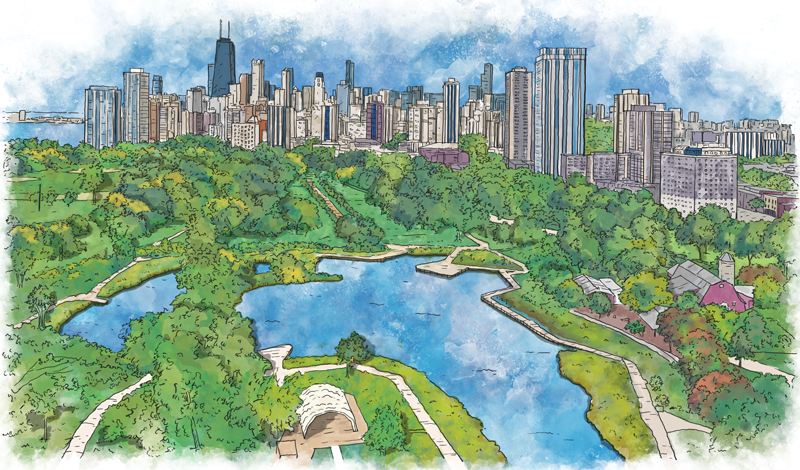On the evening of September 30, 1980, Ikeda Sensei departed from Tokyo to Honolulu. In the two decades since his first overseas visit in 1960, the Soka Gakkai had spread the life-empowering tenets of Nichiren Buddhism to 90 countries and territories.
On this trip, Sensei attended 20th-anniversary commemorative meetings in San Francisco and Washington, D.C., before arriving in Chicago on October 10. While his visit lasted a mere two days, it would become a major turning point for the members in the Midwest.
Living Buddhism chronicles Sensei’s visit through the recollections of the members who were present.
When Sensei first visited Chicago on October 8, 1960, about a dozen members welcomed him at the airport, including many who had traveled from the surrounding states, including Kentucky and Michigan. Two decades later, the 20th-anniversary celebration held at the Medinah Temple, a large Moorish revival building erected in 1912, was attended by 5,000 members from throughout the Midwest—a clear indication of the dynamic growth of the membership.
For the members of Chicago, Sensei’s decision to stop in their city was actual proof of their fierce determination to welcome their mentor home. In 1979, Sensei had stepped down as third Soka Gakkai president to shield the members from the corrupt and authoritarian Nichiren Shoshu priesthood, who had colluded with former Soka Gakkai members to bring about his downfall.
Upon hearing of Sensei’s resignation, the Chicago members began chanting to protect and unite with their mentor’s heart for kosen-rufu. What began as a small group chanting at the Chicago community center became a tidal wave of daimoku, soon referred to as “super morning gongyo.”
In August 1980, Chicago members held a festival, a dress rehearsal of sorts to welcome their mentor, although there were no actual plans for a visit. But soon after, Chicago leaders were notified that Sensei was coming two months later to celebrate the 20th anniversary of his first U.S. visit. They titled the upcoming event “Capture the Spirit.”
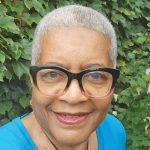
Phyllis Goodson (Chicago): In 1979, I attended a training course in Japan. This was right after Sensei resigned as the third Soka Gakkai president and was banned from speaking at large meetings. At one of the centers, Sensei was there but unable to say anything. I was so strongly moved by how he still played the piano to encourage us.
Under those circumstances, we, the members, had to decide what we were going to do. I believe the “Capture the Spirit” festival was Chicago’s response—we were going to stand up with our mentor and protect him. Even if Sensei couldn’t go anyplace else in the world, we wanted him to know he could come here. But we had to call him, and we learned that you call Sensei with daimoku.
After returning from this training course, several of the leaders in Chicago began chanting at the center. Just as the Gosho states, first there was only one, but then two, three and a hundred followed—each individual standing alone. As each person stood up, we all united around a single determination: to welcome Sensei back to our city.
When Sensei came to Chicago in October 1980, it was actual proof of our prayer and united determination.
On October 10, Sensei and Mrs. Ikeda arrived at the Chicago O’Hare International Airport and were taken to their accommodations in Lake Forest, Illinois.
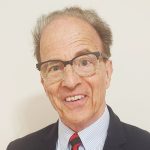
Tom Friese (Hawthorn Woods, Ill.): I was asked to be Sensei’s driver during his stay. The car that was used had a glass window between the driver and the back seat. I was told to always leave the window up, but the moment Sensei got in the car, he asked me to bring the window down. I could feel that he wanted to connect. I sensed his genuine humanity.
As we drove from the airport to the residence 35 minutes north, Sensei talked and Mrs. Ikeda laughed the entire time. When we arrived, he welcomed all of the support staff into the living room and expressed his appreciation. He used every spare moment to encourage us.
The Power of Practice
On the following day, October 11, Sensei visited the local shops in Lake Forest for coffee and lunch before heading to the Chicago community center in the late afternoon for a gongyo meeting.
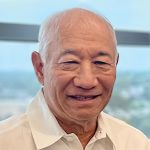
Stan Miyake (Morton Grove, Ill.): I joined the Soka Gakkai in 1974 when I was 24 and immediately introduced my brother to the practice. We both received the Gohonzon shortly thereafter.
We grew up in a household where our parents would always tell us what would go wrong, so I had a lot of worries and anxieties. Everyone I met in the Soka Gakkai was optimistic, and I always felt hope reading Sensei’s encouragement. One of the things Sensei said to me on multiple occasions was: “Don’t worry. Everything is going to be fine.” I think he sensed that I was always worried about something.
Toward the “Capture the Spirit” festival, I had been rehearsing to stand at the top of a three-story human pyramid. But a couple of weeks before the festival, I was suddenly asked to be a driver for the Seikyo Press. This meant following Sensei wherever he went.
The day after his arrival, we stopped at a restaurant in Lake Forest to have lunch. I was tasked to watch the cars. I was waiting only 15 minutes when a men’s division member came running out and told me to come inside the restaurant. I thought to myself: Oh my, I did something wrong. I must be in trouble.
When I went in, Sensei was sitting at a table with several other leaders. When he saw me, he waved me over to come sit down. I sat down next to him, and he asked if I was hungry. I politely responded no. He asked, “Are you sure you are not hungry?” I told Sensei again that I wasn’t. He then asked a third time. This time, I was honest and said, “Yes, I’m very hungry,” to which he said, “Let’s share a hamburger together.”
He cut his hamburger and gave half to me. It was very good! When we both finished, he asked if I had enough to eat. Yes, I said, and I thanked him. He then said to everyone, “Stan’s finished, so we can leave now.” He treated me as if I were the most important person in the room.
He told me to do my very best. For me, this encounter was tremendous encouragement. It solidified something in me—I knew that I would never stop practicing after this.
What amazes me is Sensei’s deep care for the people working behind the scenes. I don’t know how he even knew I was outside waiting. He didn’t put on any airs. You could feel his 1,000% undivided attention when he was with you. I could understand how, with his deep care and humanity, he could spread happiness around the world.
Later in life, I lost my job, and I had to find a way to support my wife and two kids. While initially discouraged, my faith never wavered. I took on freelance work and, that year, we were able to buy a house. Then, when my family needed health insurance, I quickly got a new, better-paying job with benefits and everything turned around. During this entire struggle, Sensei’s encouragement to do my best was always with me.
I’m a district men’s leader now, and I want to do more shakubuku. Nothing makes me happier than introducing someone who is seeking. Every morning, I chant to carry out my mission with Sensei.
When I look back at my many years of practice, I can see how much fortune I’ve built. I have no fears or worries. I wake up happy every day and that is the greatest fortune.
Sensei arrived at the Chicago community center in the late afternoon and recited gongyo and daimoku with 350 members. His short talk turned into a 45-minute guidance session on the power of prayer and practice to the Gohonzon. In part, Sensei said:
The Gohonzon we pray to is the fundamental basis of our practice. Nichiren explains the Gohonzon, the supreme object of devotion, as the “cluster of blessings” and “perfectly endowed.” It is the embodiment of the Law, the original life force of the universe, and contains all the “treasures” of the universe. The Gohonzon of Nam-myoho-renge-kyo contains the eighty thousand teachings of Shakyamuni and embodies the Mystic Law that is supreme among Buddhist teachings and is in fact the basis of everything that exists. …
Religion involves practice. Practice in Nichiren Buddhism means to do gongyo and chant Nam-myoho-renge-kyo, to lead others to the Gohonzon and to study. As long as you do these with faith in the Gohonzon, you can show actual proof of the validity of faith in your daily life. (Buddhism in Action, vol. 1, p. 21)
Following the gongyo meeting, Sensei attended a dinner with 200 representative leaders from the Midwest. Upon leaving, Sensei wished everyone the best for the culture festival and general meeting to be held the following day.
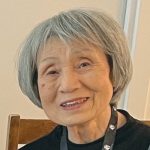
Chimi Miyajima (Chicago): I began practicing in 1965. In 1974, my husband came to the U.S. for work. My English was very poor, so I couldn’t work, but I did my best in activities and challenged myself to share Buddhism with others. Through these efforts, I became a stronger person.
I was here right in time for Sensei’s 1975 visit to Chicago and in 1980, I supported behind the scenes at the residence.
I woke up very early one morning to prepare the room. I thought I was the only one up at that hour, but someone said: Otsukaresama desu. (Thank you for your efforts). When I looked up, it was Mrs. Ikeda. She was up and ready before I was.
She asked me if I read Japanese tabloid magazines. I answered no. She said, “That’s good.” This was at a crucial time when Sensei was getting slandered in the tabloids. I think she was worried that the members would be swayed by these negative articles.
At the time, I hadn’t fully understood the situation that Sensei was in. He had stepped down in 1979 to protect the members from the priesthood. I regret that I didn’t know. But even amid those difficult circumstances, he still made everyone feel so comfortable.
On one occasion he gave a lecture on Nichiren’s writings to the support staff. Many of us took out notebooks to take notes, but he asked everyone to just listen and relax.
I can still hear Sensei’s voice giving that lecture.
His voice was so kind, and he spoke in a way that everyone could understand. It wasn’t strict or complicated; it just resonated with our hearts.
This short time with Sensei really impacted my life. There were many obstacles, but I’ve been able to overcome everything because of his encouragement.
Following Sensei’s visit, I worked as a florist. Everything I’ve done to support that movement has come alive.
The city and the organization have changed a lot since then. Today, we have a nice culture center in front of Daisaku Ikeda Way. I am praying that the city continues to grow.
When I look back at my life. I think what was most important was the heart to believe in myself and to believe in what Sensei said.
Today, at 88, I’m healthy. I can walk fine and eat whatever I want. I can participate in SGI activities. That’s my fortune. I don’t have any concerns. I’m now praying to fulfill my mission in this lifetime and move on to my next mission.
‘Capture the Spirit’
Capture the Spirit” was an hourlong festival showcasing experiences and the myriad talents of the Chicago members—a prelude to the 20th anniversary general meeting. Members from throughout the Midwest and East traveled to Chicago for the festivities, riding in buses from as far as New Orleans (23 hours) and from Boston and New York, (more than 15 hours) to arrive for the 1 p.m. show.
Many of the 500 performers had been rehearsing for several months with the resolve to make this a turning point in their life. In response to their sincerity, Sensei spent much of his time seated in the balcony writing encouragement to the performers.
One young woman, who was blind from birth, shared her experience of overcoming life’s challenges and finding hope with Buddhism. Her dance was simple but exuded the joy of living.
Following was a song performed by the seven Bailey siblings. Their mother shared her experience of overcoming tremendous difficulty, including her husband’s alcoholism, domestic violence, poverty and discrimination to completely transform her destiny through her Buddhist practice.
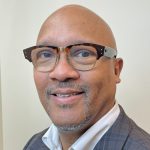
Al Bailey (Chicago): My mother joined when I was 5, and I started chanting at the age of 9. In 1980, I was 21 and a district young men’s leader. I performed in two pieces: the three-story pyramid with the gymnastics group and the original song that my siblings and I performed for Sensei. I was told that there would be a flashlight on Sensei, who would be seated in the balcony. I kept my eyes on him the whole time.
During rehearsals, the three pyramids never went up at the same time. But during the actual performance in front of Sensei, they all went up together. I believe it was the power of our daimoku and our determination together with Sensei.
During the festival, Sensei was writing encouragement to the performers and one of the poems he wrote was to my family. It said: Royal Children. Sing proudly your mother’s song.
For 20 years, I wondered what Sensei meant by that poem. We were by no means “royal” and none of us felt that way. In March 2000, Sensei wrote an essay reflecting on March 16. Sensei says in this essay: “Today, I would like to place a crown on the head of each noble member of the youth division, my young disciples, who are striving so hard to achieve kosen-rufu. It is only by triumphing in various struggles, however, that one earns the right to receive the glorious successor’s crown” (March 4, 2016, World Tribune, p. 8).
I realized then what he was trying to say with the poem. He was saying: Please become capable by overcoming your struggles, and fight together with me for kosen-rufu.
I realized how much expectation Sensei had for my family—how much he expects of all of us.
What connects us to Sensei is daimoku. Through our daimoku, we are connected lifetime after lifetime with our mentor. There was a storm of daimoku being chanted at that time in Chicago, and that’s how we welcomed Sensei to our city.
I say to the youth: Become champions of daimoku. A person who chants will never be defeated. Negative functions are always lurking around; they will always try to zap your life force, your energy and make you feel depressed. But become a champion of daimoku and shakubuku, and you will never be defeated.
The chorus came next, performing three songs, followed by a Cherry Blossom ballet. Next, a quartet took center stage, followed by the young men’s gymnastics group that constructed a three-story pyramid. Angela Olivera, world-renowned Spanish dancer and SGI member, performed a moving piece. In the finale, a swan gracefully moved along the waves of a lake.
“Capture the Spirit” came to a close, but the joy continued with presentations of Sensei’s poems.
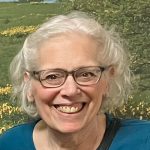
Lee Kie (Chicago): I was in the chorus as well as the swan in the finale. To my surprise, I received a poem from Sensei onstage after the performance. It said: Cherry Blossoms. Spring has come to Chicago. The music of happiness. I always understood this poem to be a sign of hope.
Sensei must have said: “Do your best,” because I remember saying, “I will, I will.”
In life, I was the type to have many regrets and always look backward. But after this festival, I remember feeling excited to go forward. It helped me understand that I had a mission that only I could fulfill, and I was excited to accomplish that mission.
I have been near Sensei on several occasions, and no matter how far or close he was standing, I always felt like I was together with him.
In 1980, I was working a job that I didn’t like, but after that festival, I got a great job in IT and stayed there for 26 years. When I turned 65, I looked back and realized that all of my dreams had come true. Now, I just keep making more goals to accomplish!
To the young people practicing this Buddhism: Whether you chant or not, life is tough sometimes. But if you never give up, share Buddhism with others and support them, you will achieve true happiness!
The youth are now writing volume 31 of The New Human Revolution together with Sensei, and I want to continue to be a part of the story. I will support them 100%! I am determined to help many more people encounter this Buddhism and realize even more impossible dreams.
The 20th anniversary meeting then began. Sensei emphasized the importance of study, stating that the more one studies Buddhism, the more clearly one can understand that Nichiren Buddhism is a religion that can lead all humankind to enlightenment. He spoke about how the writings of Nichiren Daishonin form the essence of Nichiren Buddhism. They teach us about the Law of the universe and the correct attitude of faith. He continued:
Without a thorough knowledge of Nichiren’s teachings, our practice can easily become self-centered, and we may begin interpreting Buddhism in our own way. Study will deepen our confidence in faith and direct us to a correct path toward kosen-rufu.
Sensei then affirmed that it was now time to introduce a broader group of people to Nichiren Buddhism and to do so, a deeper understanding of Buddhism based on Nichiren’s writings was necessary.
This speech became the backbone of the Chicago membership as they made study their foundation.
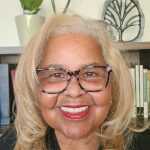
Karen Wells (Chicago): I was a district women’s division leader in 1980. I chanted and did a lot of shakubuku. By then, I had been practicing for seven years and had overcome a lot, including an abusive first marriage.
When the festival came around, I supported the costume department, which was made up mostly of Japanese pioneer women. After work, we would work on the costumes until around 10 p.m. every night, and on weekends we would work all day long.
I wholeheartedly supported the movement, doing whatever was needed—picking up supplies or fabric or measuring the performers. Our motto was that every thread of the costumes would produce great joy both for the performers and the audience.
During the festival we were downstairs at the Medinah Temple, working until the last performer got off stage. We were told to come upstairs when it was time to hear Sensei speak.
In his speech, he talked about the importance of studying the Gosho to become happy and help others become happy. I remember that clearly. From that time, I made it a point to read the World Tribune and Living Buddhism and study as if Nichiren Daishonin were talking directly to me.
I think everyone left with a personal determination to study more because after Sensei’s visit, I remember more people being at the Gosho lectures!
My husband, John, and I have been living in our neighborhood since 1973. A diverse group of people live on our block—people of all different ethnicities and religions. I’m supporting as one of the leaders in our neighborhood group, which organizes meetings and block parties so that we can look out for each other as a community.
Unfortunately, people have been killed on our block in the past, so I’m determined that we transform the lives of everyone here, no matter what, based on respecting all people.
I will also continue sharing Nichiren Buddhism with everybody I encounter. This is my determination to respond to Sensei: We’re going to transform this world, starting with my community. Sensei has told us that every moment is crucial and with his passing, I can’t help but feel that that is even more true.
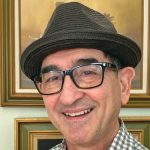
Harry Rivera (Chicago): I was in college when I started practicing in 1976. By 1979, I got a new job that doubled my salary, and I also started to change my relationship with my father, with whom I hadn’t been on speaking terms. It was the beginning of tremendous change in my life.
It was also a time of great change in the organization as Sensei was forced to step down. I was fortunate that in Chicago, we had leaders who determined at that time to welcome Sensei to our city. The members started chanting a lot, and it took my practice to another level.
For the festival, I was part of the dance routine. During our final practice, they told me they had too many dancers and took me out of the performance. I was really upset. But I quickly changed my attitude and decided that I would chant for the best possible outcome and the greatest performance to encourage others. I was chanting during the final run through when they came back and told me that I would be in the final performance. Chanting sincerely allowed me to correct my attitude and ego, and that was an important lesson for me.
Sensei’s guidance at the meeting following the festival really stood out. I still remember it to this day. He told us that we were good at doing shakubuku, but we needed to focus on our study.
In 2008, this guidance kept me unshaken when the economy crashed. I was self-employed in real estate and in the process of building a new condo building. Our project went belly up and the bank came after us, took a property I owned and tried to take the house that I had been living in for 20 years. My wife was devastated. I decided to dig deep and began a daimoku and study campaign. At that time, the passage “A sword is useless in the hands of a coward” (“Reply to Kyo’o,” The Writings of Nichiren Daishonin, vol. 1, p. 412) really kept me going. I came back from that loss and am now nearing retirement.
One of the greatest benefits of practicing is that I can feel joy and appreciation no matter the circumstance I’m facing. I am firmly convinced I am on the right path and need to help others get there, too!
Recently I was diagnosed with cancer. When I received my diagnosis, I thought, This is my mission! Everything we experience is so that we can learn how to win and then encourage others. The more we experience, the more people we can encourage, so I’m grateful for the opportunity! I have entered this situation with 100% confidence that I will overcome it.
After the festival and general meeting, Sensei attended a dinner meeting with some 300 members at the Marriott. At the end of this meeting, he played the piano for the members.
Sparing No Effort to Encourage One More Person
On the following day, October 13, Sensei was scheduled to depart to Canada from Chicago, but due to delays and a flight cancellation, he headed to Los Angeles directly from O’Hare. As delays prevented him from departing, Sensei used the time with the members to encourage them through study, even giving an impromptu lecture on Nichiren’s writings in the airport lounge.
Tom Friese: The morning of his departure, I was standing outside of the car waiting for Sensei and Mrs. Ikeda at the residence. No one but me and another young man were outside, and he motioned for us to follow him. We did, and he took us to a room where we did morning gongyo with him and Mrs. Ikeda.
Sensei was so focused during gongyo, as if he were communing with Nichiren Daishonin the entire time. After gongyo, he turned around and lectured on “The Heritage of the Ultimate Law of Life” for six or seven minutes.
What I remember most about Sensei was his compassion. Whether it was a performer, a leader from Japan or a behind-the-scenes supporter, he wanted to know about their life and was concerned about their well-being. It was constant.
There was another encounter Sensei had with some of the neighborhood boys. I remember the boys started crying during their interaction, moved by Sensei. Wherever he went, people felt embraced, as though by a vast warm ocean.
When we got to the airport, Sensei’s flight was delayed, but he gave a Gosho lecture to 40 or so members and behind-the scenes-supporters who were there. He gave every spare moment to encourage the members.
That visit transformed Chicago, and it transformed me. After that, I went after impossible dreams, with the desire to show great actual proof in my life as a disciple and as a servant to the members.
Every morning, I pray to meet capable young people, and I can’t tell you the incredible youth I’ve met. Every single one of them is suffering from loneliness. I strive to show them the same warmth and humanity that Sensei showed me and teach them the power of Nam-myoho-renge-kyo and benefit of practice.
Phyllis Goodson: I started practicing in 1971. Chicago was unique in that there was animosity between the North Side and South Side of Chicago. As a city, we were confronting these societal issues. No one really associated with one another until we came to the community center. We began to transcend societal differences by developing trust with one another through SGI activities. I took on leadership in the young women’s division right away and did a lot of human revolution by learning how to trust others. I got my first teaching job soon after beginning my Buddhist practice, and I ended up becoming a principal.
The racial tensions that plagued Chicago pulled people apart in society, but as practitioners, the festival brought us all together. We were many in body, but it enabled us to transcend our differences and become one in mind.
During the general meeting, I remember Sensei spoke about study, and when he did, people were listening intently—but it felt like family. He was saying this is what you have accomplished, and this is what you have to do next. It was warm and trusting.
I didn’t fully understand what the oneness of mentor and disciple relationship was at that time, but I can say that I was put on the path of seeking to understand it. The term “shared struggle” is so important to me in understanding what the oneness of mentor and disciple is. I am running side by side with my mentor, and the mentor runs as far as he can, and now I have to continue on and keep running. Then I pass the baton to the next ones who will keep going after me.
While society may change, and the way we do things will vary, it is through the oneness of mentor and disciple relationship that we maintain our key values as Bodhisattvas of the Earth.
Two years ago, I had a difficult health challenge and found myself in a life-or-death situation. While I was fighting for my life, what came out of my life was appreciation—appreciation for Sensei for teaching me everything I needed to not give up in that crucial moment. My gratitude and appreciation overwhelmed me. I was fearless because of my mentor’s instruction, and it saved my life.
I want to instill in the youth to never ever, ever give up—no matter what the situation looks like. Be strong enough to have the guts, stamina and resiliency to keep going no matter what anybody says. With the oneness of mentor and disciple, you can get through it.
Before departing, Sensei shared with the members his vision for worldwide kosen-rufu and the role of the developing SGI organization. “From Chicago,” he said, “I will start a new wave of global kosen-rufu.”
Including his inaugural trip to Chicago in 1960, Sensei visited Chicago four times, totaling 19 days, giving his all to encourage the members in faith and demonstrate a life dedicated to peace and justice.
For the members of Chicago, who fought to welcome their mentor back to their city during a pivotal time for the organization and for Sensei, his 1980 visit reinvigorated their lives and gave them an eternal starting point to which they could always return, as they spread waves of peace and happiness in their city.
You are reading {{ meterCount }} of {{ meterMax }} free premium articles

